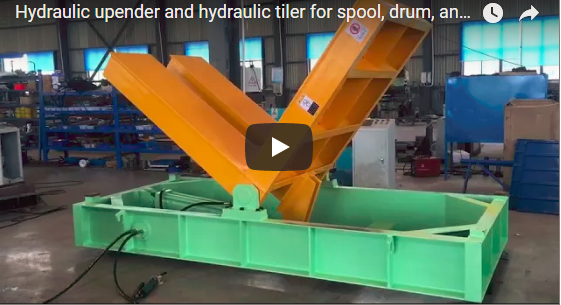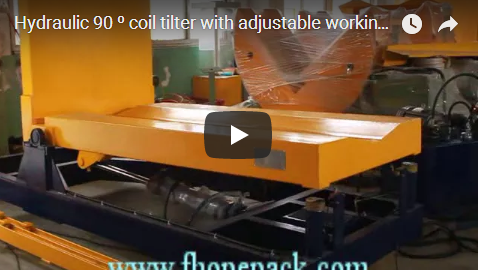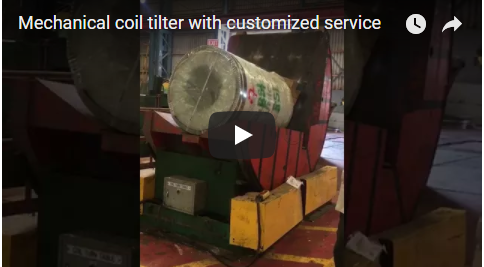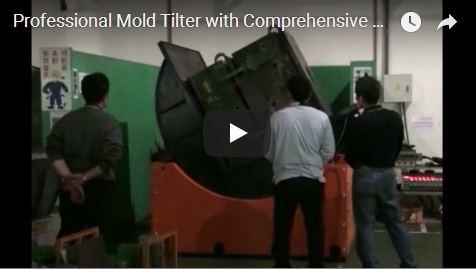Revolutionizing Warehouse Logistics: A Deep Dive into the Mobile Pallet Inverter
In today's fast-paced logistics and manufacturing environments, efficiency and safety in material handling are paramount. One common yet often cumbersome task is the need to exchange pallets – whether due to international shipping regulations, internal hygiene standards, or simply replacing a damaged pallet. Traditionally, this involved manual restacking, a time-consuming, labor-intensive, and potentially risky process. Enter the Mobile Pallet Inverter, a versatile and powerful solution designed to streamline this critical operation. This Fhope machine represents a significant leap forward, offering convenience and enhanced productivity across various industries.
1. Understanding the Pallet Exchange Challenge
Before delving into the specifics of the mobile inverter, it's crucial to appreciate the challenges it solves:
- Labor Costs & Time: Manual transfer of goods from one pallet to another requires significant manpower and time, directly impacting operational costs.
- Product Damage Risk: Handling goods multiple times increases the likelihood of damage, especially with fragile items.
- Worker Safety: Repetitive lifting and awkward postures during manual restacking pose ergonomic risks and potential injury hazards.
- Operational Bottlenecks: Slow pallet exchange processes can create bottlenecks in receiving, warehousing, and shipping workflows.
- Hygiene & Compliance: Industries like food, pharmaceuticals, and chemicals often require specific pallet types (e.g., plastic instead of wood) for hygiene or export compliance, necessitating frequent exchanges.
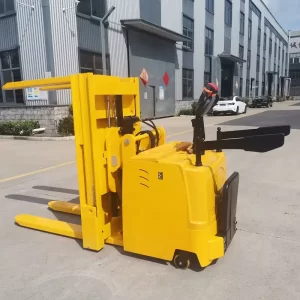
mobile pallet inverter for sale3 2. The Mobile Pallet Inverter: Design and Operation Principles
The Fhope Mobile Pallet Inverter is engineered for flexibility and ease of use. Unlike stationary models, its key advantage lies in its ability to travel directly to the load, eliminating the need to transport pallets to a fixed inversion point.
- Core Functionality: The machine approaches the loaded pallet, securely clamps it using adjustable pressure plates, lifts it slightly, and then rotates the entire load (typically 180 degrees). The original pallet can then be easily removed from the top, and a new pallet placed before the load is rotated back and lowered.
- Mobility: Equipped with robust wheels and a steering mechanism (often tiller-controlled like a pallet jack), it can be maneuvered easily within warehouse aisles and production areas. It's typically battery-powered, offering cordless operation.
- Clamping System: The hydraulic clamping system provides secure holding pressure suitable for various load types and weights, preventing shifting during rotation. Pressure can often be adjusted to protect delicate goods.
3. Key Components and Structural Integrity
Understanding the components highlights the machine's robust design for industrial use:
- Chassis & Mast: A heavy-duty steel frame provides the structural backbone, ensuring stability and durability. The mast guides the lifting and lowering mechanism.
- Clamping Arms: These hydraulically actuated arms apply pressure to secure the load. They often feature adjustable widths and durable padding to accommodate different pallet sizes and protect goods.
- Rotation Mechanism: A powerful hydraulic or electro-mechanical system drives the 180-degree rotation smoothly and reliably.
- Power Unit: Typically incorporates a rechargeable industrial battery, hydraulic pump, and motor, providing self-contained power for mobility, lifting, and rotation.
- Control Panel: User-friendly controls, usually located on the tiller arm, allow the operator to manage clamping, lifting, rotation, and travel functions intuitively. Emergency stop buttons are a critical safety feature.
4. Technical Specifications Deep Dive
To truly evaluate the capabilities of a mobile pallet inverter, key technical data points are essential. While exact specifications vary by model, here are typical parameters for machines like the Fhope unit:
| Feature | Typical Specification Range | Importance |
|---|---|---|
| Load Capacity | 1000 kg - 1500 kg (2200 - 3300 lbs) | Determines the maximum weight it can handle. |
| Rotation Angle | 180 Degrees | Standard for full pallet exchange. |
| Pallet Size Comp. | Standard Euro, CHEP, US pallets | Ensures compatibility with common pallet types. |
| Clamping Range (Jaw Opening) | 500mm - 2000mm+ (approx.) | Accommodates varying load heights. |
| Machine Weight | 800 kg - 1500 kg (approx.) | Influences floor load requirements & stability. |
| Power Source | 12V or 24V DC Battery System | Enables mobile, cordless operation. |
| Cycle Time | 30 - 60 Seconds (approx.) | Indicates the speed of a complete operation. |
| Turning Radius | 1500mm - 2500mm (approx.) | Critical for maneuverability in tight spaces. |
Note: These are representative figures. Always consult the manufacturer's specific data sheet for the exact model.
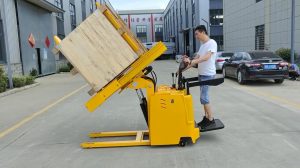
5. Applications Across Diverse Industries
The versatility of the mobile pallet inverter makes it invaluable in numerous sectors:
- Food & Beverage: Exchanging wooden pallets for hygienic plastic ones before entering clean production areas. Handling bagged goods, cartons, or crates.
- Pharmaceuticals: Ensuring compliance with strict hygiene standards by transferring goods to sanitized pallets.
- Paper Industry: Handling large reels or stacks of paper, often requiring specific pallet types for processing.
- Chemicals: Safely handling bagged or drummed chemicals, switching to appropriate pallets for storage or shipping.
- Logistics & Distribution: Consolidating loads, transferring goods from damaged pallets, or meeting specific customer pallet requirements.
- Manufacturing: Integrating into production lines where components arrive on one type of pallet but need transferring for internal movement or final shipping.
6. Operational Advantages & Personal User Experience Insights
From an operational standpoint and based on user feedback, the mobile pallet inverter offers significant benefits:
- Drastic Time Savings: Reduces pallet exchange time from potentially 15-30 minutes manually to under a minute.
- Reduced Labor Need: A single operator can perform the task quickly and safely, freeing up personnel for other duties.
- Enhanced Safety: Eliminates manual lifting and reduces the risk of back injuries and strains associated with restacking.
- Improved Product Integrity: Gentle clamping and rotation minimize the risk of damage compared to manual handling.
- Flexibility & Space Saving: Operates anywhere in the facility without requiring dedicated floor space like stationary units. Ideal for facilities with limited space or varying work locations.
- Ease of Use: Operators typically find the controls intuitive after basic training. The powered travel and steering reduce physical effort. The feeling of control and the immediate efficiency gains are often highlighted by users.
7. Safety Considerations and Best Practices
While efficient, operating heavy machinery requires adherence to safety protocols:
- Operator Training: Ensure only trained and authorized personnel operate the machine.
- Load Stability: Verify the load is stable and properly centered before clamping and rotation. Use stretch wrap if necessary.
- Clear Operating Area: Maintain a clear zone around the machine during operation.
- Floor Conditions: Operate on level, debris-free surfaces capable of supporting the machine and load weight.
- Regular Maintenance: Follow the manufacturer's maintenance schedule for hydraulics, batteries, and mechanical components.
- Use of PPE: Operators should wear appropriate personal protective equipment (e.g., safety shoes).
8. Conclusion: Streamlining Pallet Handling for Modern Operations
The Fhope Mobile Pallet Inverter is more than just a piece of equipment; it's a strategic tool for optimizing warehouse and logistics operations. By directly addressing the inefficiencies and risks of manual pallet exchange, it provides a rapid return on investment through increased productivity, enhanced worker safety, and reduced product damage. Its mobility adds a layer of flexibility unmatched by stationary systems, making it an ideal solution for dynamic environments across a wide range of industries seeking to improve their material handling processes. Investing in such technology is a clear step towards a safer, faster, and more cost-effective supply chain.

